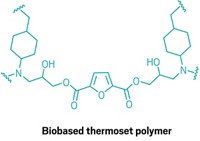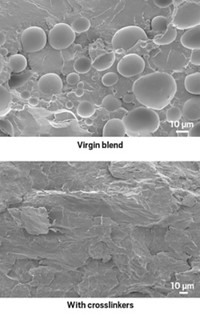Advertisement
Grab your lab coat. Let's get started
Welcome!
Welcome!
Create an account below to get 6 C&EN articles per month, receive newsletters and more - all free.
It seems this is your first time logging in online. Please enter the following information to continue.
As an ACS member you automatically get access to this site. All we need is few more details to create your reading experience.
Not you? Sign in with a different account.
Not you? Sign in with a different account.
ERROR 1
ERROR 1
ERROR 2
ERROR 2
ERROR 2
ERROR 2
ERROR 2
Password and Confirm password must match.
If you have an ACS member number, please enter it here so we can link this account to your membership. (optional)
ERROR 2
ACS values your privacy. By submitting your information, you are gaining access to C&EN and subscribing to our weekly newsletter. We use the information you provide to make your reading experience better, and we will never sell your data to third party members.
Materials
Welding immiscible polyethylene and isotactic polypropylene
Pyridylamidohafnium catalyst produces a tetrablock copolymer that holds these popular plastics together
by Bethany Halford
February 27, 2017
| A version of this story appeared in
Volume 95, Issue 9

Polyethylene (PE) and isotactic polypropylene (iPP) account for nearly two-thirds of the world’s plastic—adding up to $200 billion in annual sales worldwide. When melted together, PE and iPP are immiscible and form a brittle material. So they tend to get recycled into lower-value products because of the expense associated with sorting them from one another. Now, researchers led by Cornell University’s Geoffrey W. Coates, Anne M. LaPointe, and James Eagan, along with the University of Minnesota’s Frank S. Bates, have come up with a way to turn a mix of PE and iPP into a more valuable plastic (Science 2017, DOI: 10.1126/science.aah5744). They found that adding a small amount—about 1% by weight—of a tetrablock copolymer made from PE and iPP will transform a blend of PE and iPP into a mechanically tough material. The copolymer essentially acts like glue and holds the two immiscible plastics together. The researchers make the tetrablock copolymer using a pyridylamidohafnium catalyst, which they previously reported in a patent (WO2008112133A2). Although development work still needs to be done, the researchers hope the discovery will affect the way plastics are recycled.





Join the conversation
Contact the reporter
Submit a Letter to the Editor for publication
Engage with us on Twitter